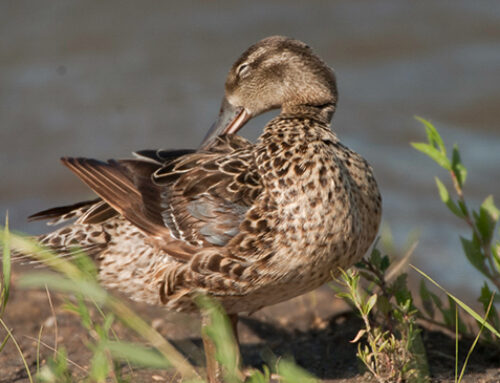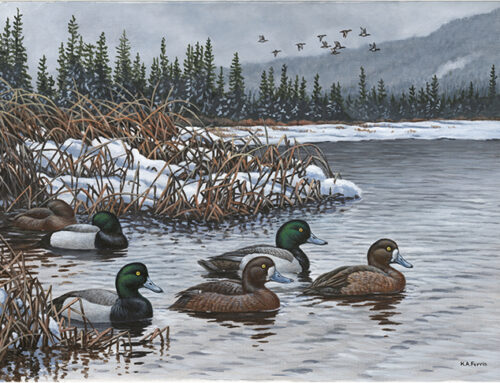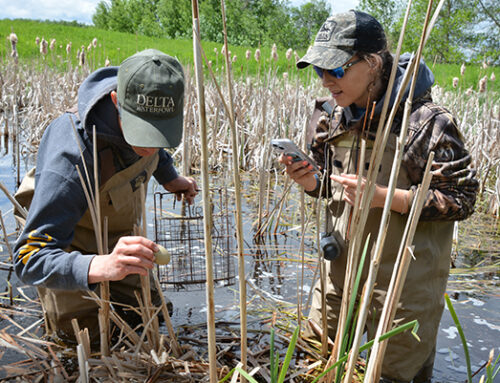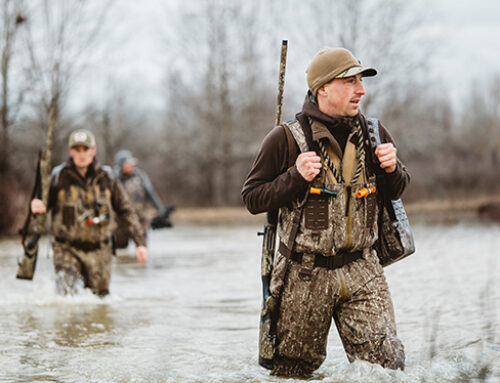2024 State Breeding Population Survey Roundup

Mallards increase in Michigan and Oregon, total ducks down in many states
By Paul Wait
 As duck and goose hunters anxiously await results from the continental 2024 Waterfowl Breeding Population and Habitat Survey—expected later this month from the U.S. Fish and Wildlife Service—Delta Waterfowl has gathered data from several independent state waterfowl surveys.
As duck and goose hunters anxiously await results from the continental 2024 Waterfowl Breeding Population and Habitat Survey—expected later this month from the U.S. Fish and Wildlife Service—Delta Waterfowl has gathered data from several independent state waterfowl surveys.
Wetland habitat conditions in the key prairie pothole region started out fair to good in April across the Dakotas and Manitoba but improved dramatically with strong precipitation during May and June. Alberta and Saskatchewan were deemed fair to poor in April, but wetland conditions in both provinces have since improved. Conditions for breeding waterfowl in the western United States entered spring in fair to good shape but have dried out a bit since April. Wetlands in eastern Canada and the United States are good to excellent. Duck production is expected to be strong in the Dakotas, as well as in Manitoba and parts of Saskatchewan.
Delta Waterfowl will provide extensive analysis as soon as the USFWS Population Status Report is released. Until then, here’s a roundup from seven key waterfowl production states that conduct their own spring breeding surveys.
Delta would like to thank the following state agency people who supplied the survey data we’ve summarized hereafter:
Barbara Avers, Michigan Dept. of Natural Resources
Taylor Finger, Wisconsin Dept. of Natural Resources
Bruce Davis, Minnesota Dept. of Natural Resources
Mike Szymanski, North Dakota Game and Fish Department
Kyle Spragens, Washington Dept. of Fish and Wildlife
Brandon Reishus, Oregon Dept. of Fish and Wildlife
Melanie Weaver, California Dept. of Fish and Wildlife
Michigan
Michigan estimated 673,827 total ducks during the state’s survey, which is 12% above the long-term average dating back to 1991.
Mallards were estimated at 250,581, a figure that’s 22% below the LTA, but 12% higher than the most recent 10-year average. Michigan’s results summary notes the survey was conducted one week earlier than normal and points out it likely counted some ducks that didn’t settle in the state to breed.
Canada geese were estimated at 281,445, a 29% increase from 2023 and 21% above the LTA. The state’s management goal for Canada geese is 175,000 to 225,000, so they’re strongly above that range.
Michigan’s wetland abundance index showed 468,824 wetlands, up 2% from 2023 but 3% lower than the LTA. Wetland conditions were considered “excellent” for breeding waterfowl in the Southern Lower Peninsula and “good” for most of the Northern Lower Peninsula and Upper Peninsula, with “fair” conditions in the Western Upper Peninsula and stretches along the Lake Michigan shoreline in the Upper Peninsula and Northern Lower Peninsula.
Wisconsin
Wisconsin’s total breeding population of 502,058 ducks is 4% less than 2023, but 13% higher than the long-term mean.
Mallards were estimated at 146,561, an 8% decrease from 2023 and 18% below the LTM. Blue-winged teal were estimated at 103,717, a 2% increase and just 1% below the LTM. Wood ducks checked in at 96,711, less than 1% lower than 2023 and still 13% above the LTM. Wisconsin’s survey dates to 1973.
Canada geese declined 4% to 153,402, but the species remains 42% above the LTM.
While much of Wisconsin started spring quite dry, consistently abundant rainfall in May and June dramatically improved wetland conditions. Good production is a likely result.
Minnesota
Minnesota’s 2024 survey showed a breeding duck population of 387,020, the lowest estimate since 1983.
Mallards were estimated at 140,941, a 37% decrease from 2023 and 38% below the long-term average. Conversely, blue-winged teal numbers rose to 159,514, a 26% increase over 2023 but 23% below the LTA. “Other ducks,” which includes wood ducks and ring-necked ducks that nest in Minnesota, came in at 86,565, down 34% from 2023 and 51% below the LTA.
The Canada goose estimate of 106,094 was a 7% decrease from last year, and 31% below the LTA.
Habitat conditions were mixed, with the number of small wetlands increasing dramatically from spring 2023, with larger wetlands dryer than average. However, precipitation in April and May was above normal, which improved habitat conditions for breeding waterfowl.
North Dakota
North Dakota is a critically important state for breeding waterfowl. The 2024 estimate of 2.9 million breeding ducks represents a 15% decline from last year, however, it sits 17% above the state’s long-term average.
Numbers of all species were flat to down from 2023, including mallards down 19%, pintails off 29%, and blue-winged teal 13% lower.
Canada geese declined 15% to an estimated 251,000, but the population remains strong.
The wetland count declined from a very wet 2023, but still ranked the 32nd wettest year in the past 77 years. The months leading into the breeding season were dry, but consistent rains in late April, May, June improved habitat conditions. A good production year is expected.
Washington
Washington estimated 160,027 total ducks, a 22% decline from 2023.
Mallards accounted for more than half of the ducks surveyed. An estimated 86,360 breeding mallards represents a 15% decrease from 2023 and falls 6% below the long-term average.
Among other species of ducks that commonly breed in Washington, gadwalls were up 45% to 20,845, while redheads increased by 153% to 7,801. Cinnamon/blue-winged teal decreased sharply to just 2,067 birds.
Canada geese were estimated at 35,440, a 5% increase over the prior year but 8% below the LTA.
Habitat conditions across the state ranged from fair to good this spring.
Oregon
At 80,864, shovelers were the most abundant duck in the survey this spring, about triple their historic average in Oregon. The abundance of shovelers helped push the state’s total duck estimate up to 303,446, a 53% increase over 2023 and 14% above the long-term average.
Mallards, normally the No. 1 duck in the state’s survey, registered at 71,047, a 4% increase but 20% below the LTA. Gadwalls were up substantially, with an estimate of 65,278 marking a 114% increase and 21% above the LTA. Cinnamon teal came in at 16,541, which is 48% higher than 2023, but still 50% below the LTA.
Canada geese were estimated at 33,412, a 16% increase that still leaves them 27% below the LTA.
Wetland habitat conditions were average in most areas of Oregon this spring, but the report noted a lack of sheet water in the south Willamette Valley.
California
The total number of ducks in California’s breeding duck survey decreased by 25% to 373,864, which is 30% below the long-term average.
At 177,828, mallards were down 12% from 2023 and 44% below the LTA. Mallards were at a survey record low in the Sacramento Valley. Gadwalls were estimated at 54,011, a decrease of 39% that has them at 37% below the LTA. Gadwalls, too, were down significantly in the Sacramento Valley and in the San Joaquin Grasslands. The news is better for cinnamon teal, which came in at 46,097, a 38% increase over 2023 that puts them 9% above the LTA. Shovelers decreased to 47,015, a 56% drop, but they’re still 35% above the LTA.
Canada geese in the northeast stratum decreased 43% to 34,242, putting them 22% below the LTA. Nesting sandhill cranes were up 67% in the same stratum, with an estimate now 115% above their LTA.
Water conditions were average in key regions. Full water allocations in the Sacramento Valley for wetland management and rice production should benefit breeding waterfowl.






Dear Delta Waterfowl,
I greatly appreciate the preliminary report regarding 2024’s breeding estimates. In addition the article about the improved expansion of hunting on Federal Refuges. However here in Tennessee and specifically Tennessee National Wildlife Refuge, the hunters in the surrounding areas continue to be shut down by this refuge’s practice of dragging corn down and other major violations during waterfowl season as it relates to the mission statement of the refuge system. Any chance you might be able to help the waterfowl hunters around the this refuge system for a more fair and unmanipulated waterfowl season?